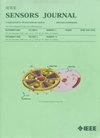SpikePR: Position Regression With Deep Spiking Neural Network
IF 4.3
2区 综合性期刊
Q1 ENGINEERING, ELECTRICAL & ELECTRONIC
引用次数: 0
Abstract
Data-driven human localization technology has been on the rise with advancements in end-to-end artificial neural networks (ANNs) in recent years. Different from the traditional pedestrian dead reckoning (PDR) algorithms, the data-driven method can significantly reduce cumulative error over time arising from integration and improve the accuracy and efficiency of localization. However, the computation complexity of ANNs imposes high requirements on hardware conditions and heavily hinders its application on mobile devices. Targeting the above challenges, we design a Position Regression algorithm with a deep spiking neural network (SNN, called SpikePR)—an architecture inspired by biological neurons—to regress the user’s position when collecting a sequence of raw inertial measurement unit (IMU) measurements from mobile devices. This architecture integrates ANNs and SNNs with a leaky integrate-and-fire (LIF) mechanism due to its low-power computation with binary spikes and capability to model the temporal dynamics in time-series data. We conduct extensive experiments on four open-source datasets with the proposed SpikePR algorithm. The experiment results demonstrate that compared to the state-of-the-art position regression algorithms, the proposed SpikePR can save more than 90% energy consumption while achieving similar location errors.求助全文
约1分钟内获得全文
求助全文
来源期刊

IEEE Sensors Journal
工程技术-工程:电子与电气
CiteScore
7.70
自引率
14.00%
发文量
2058
审稿时长
5.2 months
期刊介绍:
The fields of interest of the IEEE Sensors Journal are the theory, design , fabrication, manufacturing and applications of devices for sensing and transducing physical, chemical and biological phenomena, with emphasis on the electronics and physics aspect of sensors and integrated sensors-actuators. IEEE Sensors Journal deals with the following:
-Sensor Phenomenology, Modelling, and Evaluation
-Sensor Materials, Processing, and Fabrication
-Chemical and Gas Sensors
-Microfluidics and Biosensors
-Optical Sensors
-Physical Sensors: Temperature, Mechanical, Magnetic, and others
-Acoustic and Ultrasonic Sensors
-Sensor Packaging
-Sensor Networks
-Sensor Applications
-Sensor Systems: Signals, Processing, and Interfaces
-Actuators and Sensor Power Systems
-Sensor Signal Processing for high precision and stability (amplification, filtering, linearization, modulation/demodulation) and under harsh conditions (EMC, radiation, humidity, temperature); energy consumption/harvesting
-Sensor Data Processing (soft computing with sensor data, e.g., pattern recognition, machine learning, evolutionary computation; sensor data fusion, processing of wave e.g., electromagnetic and acoustic; and non-wave, e.g., chemical, gravity, particle, thermal, radiative and non-radiative sensor data, detection, estimation and classification based on sensor data)
-Sensors in Industrial Practice
 求助内容:
求助内容: 应助结果提醒方式:
应助结果提醒方式:


